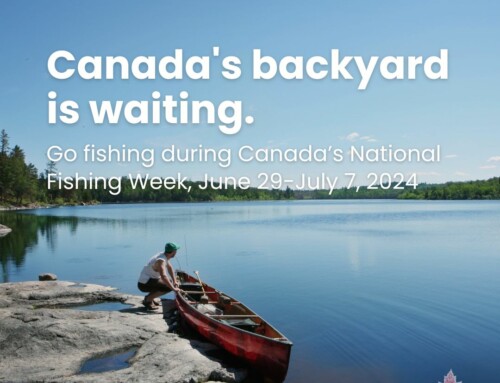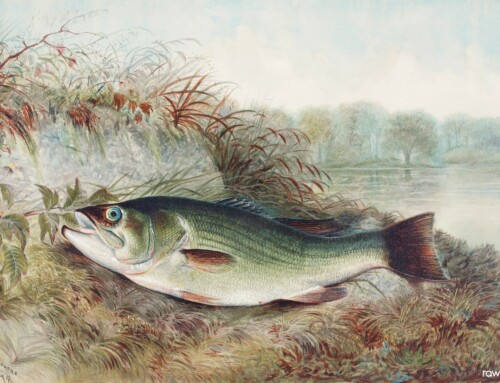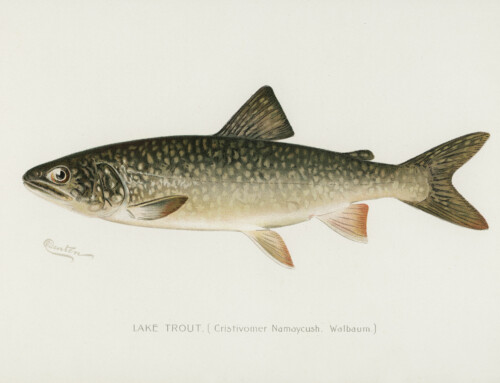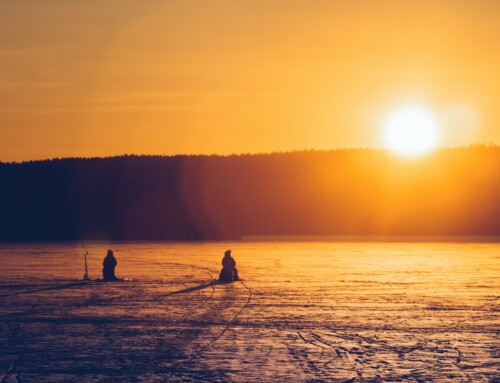Originally Published by the Bradford Times, January 19, 2016
By Miriam King
There are records of fishing on Lake Simcoe dating back to the earliest European contact. When Samuel de Champlain arrived in 1615, he found Aboriginal people fishing with nets at the fish weirs of the Narrows, between Lakes Simcoe and Couchiching – and in 1815, early settler observed First Nations fishing with spears, through holes cut in the ice.
And spear-fishing was once huge on Lake Simcoe: between 1907 and 1941, when spear fishing licences were cancelled, an estimated 500,000 lbs. of lake trout was taken by spear fishermen.
But it wasn’t the historic record that angler Wil Wegman came to discuss, at the January 16 meeting of the Innisfil Historical Society. It was the “how-to” of ice fishing, the rules and regulations, and the best strategies for catching fish.
Wegman, a champion ice angler, also talked about the evolution of fishing on one of Canada’s largest inland lakes – changes driven in large part by invasive species.
In the decade since Zebra Mussels and now Quagga mussels were introduced into the lake, the filter-feeders have made the water clearer, if not cleaner, by filtering out zooplankton. As a result, fish rely more on their sense of sight.
The round goby has exploded – “Their populations are just out of control.” The invasive species reproduces 3 or 4 times a year, and consumes the eggs and fry of other species. While there is now some predation on gobies, “it remains to be seen if that will control populations.”
One issue: Round gobies feed on zebra mussels, and concentrate the botulism toxin that can be found in the mussels – which may kill larger fish that feed on them.
VHS and KHV viruses, also introduced to the lake – presumably through the dumping of baitfish – have also led to fish die-offs.
“Lake Simcoe is the most intensively fished inland lake,” especially during the ice fishing season, Wegman says. But the changes in food availability, and greater clarity of the water column, have led to changes in the observed habits of some trophy species, especially whitefish, trout and yellow perch.
Wegman shared details of fish habitat, the importance of using fish-finders and sonar devices to locate fish in the water column, the need for “finesse” in the clear water, and the value of using the “Three Hole System” – two holes for fishing, and one for the fish finder – in having a successful day on the ice.
The sonar units make it “really fun… like a real live video game,” he told the capacity crowd. “Kids love it.”
Fishing in Ontario is free for kids under 18, and for Seniors over 65. Everyone else is asked to purchase a licence – especially since the licence dollars are used to support the fishery.
Despite the invading species, there have been success stories on Lake Simcoe. Whitefish and Lake Trout, traditionally stocked by the Ministry of Natural Resources, have started to reproduce naturally – and last January, the Cisco Herring season re-opened, for the first time in 14 years. “As the health of the lake improved, natural reproduction started again,” Wegman said. “At the brink of extinction, that species came back on its own, without the aid of stocking.”
His final advice? Maximize your fun by bringing the kids, use finesse, be mobile, don’t overjig – and be prepared for the weather.
Wil Wegman, talking about Ice Fishing on January 16, issued a warning: With the variable temperatures, snow and high winds recently, the ice on Lake Simcoe isn’t safe.
He offered the following tips, in case of breaking through the ice.
“The number 1 thing to remember is to stay calm,” he said – then turn around in the hole, because you know there is safe ice behind you, while the ice ahead may be thin.
Grab your ice picks – “the seatbelts of ice fishing” – and get horizontal, swimming or kicking your way out of the water and onto the ice, “like a seal.”
Trying to heave yourself up or hop onto the ice will create too much pressure, causing the ice to break. Remember, “you weigh an extra 100, 150 lbs., because your clothing is soaking wet,” Wegman said. Crawl away from the hole until the ice is strong enough to hold your weight.
Photo courtesy of the Orillia Packet.







